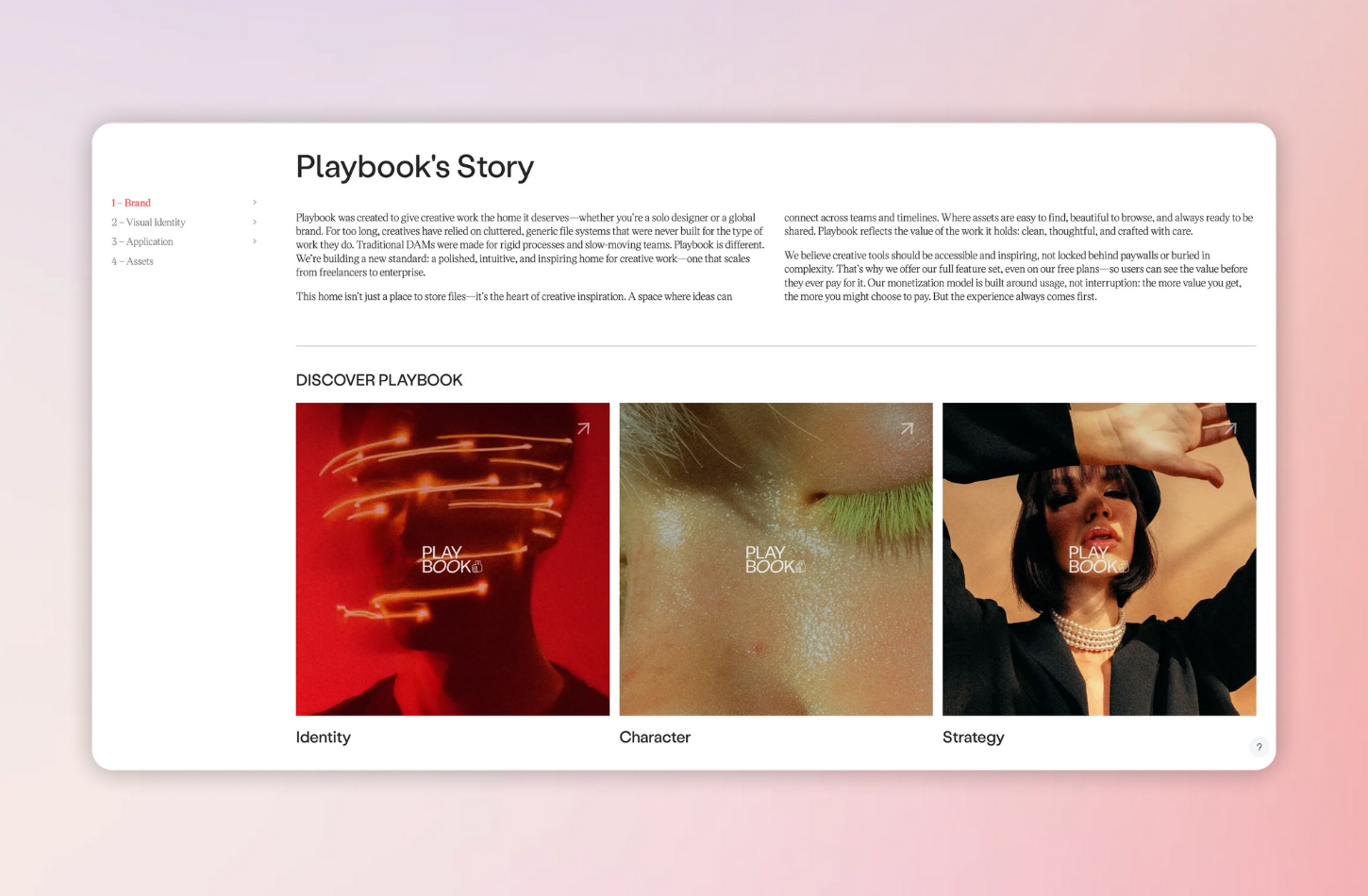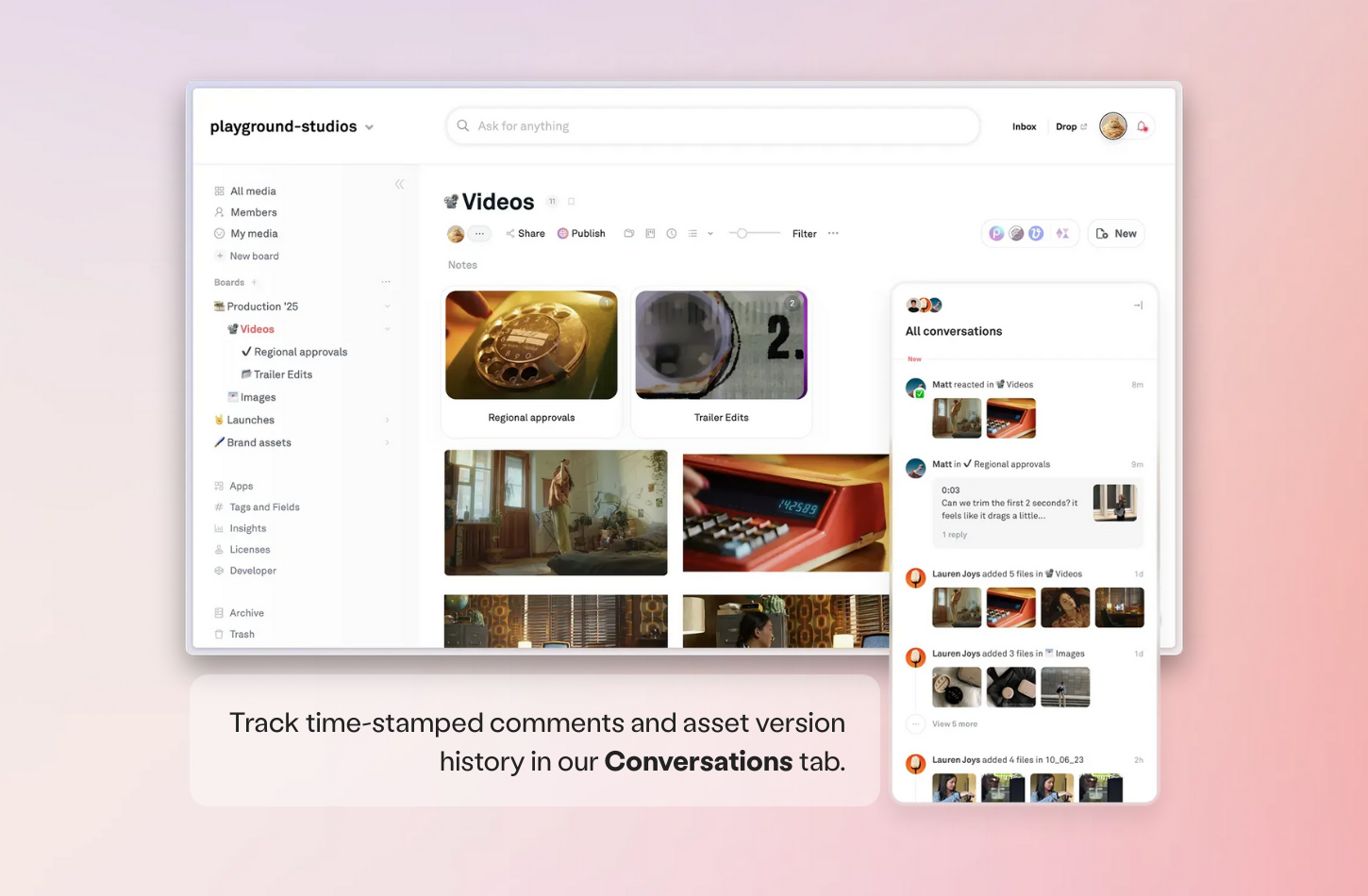Every creative team knows the struggle: feedback cycles can drag a project down faster than anything else. Whether it’s a campaign launch, a photoshoot, or a new brand asset, the review process often turns into a bottleneck—scattered comments across email threads, endless file versions, and stakeholders who say things like “make it pop” without giving clear direction.
For growing marketing teams and agencies, this isn’t just frustrating—it’s expensive. Brands spend thousands of dollars on content creation only to waste hours each week chasing down files, deciphering vague feedback, and revising work that was never properly reviewed in the first place. In fact, many creative professionals report losing up to five hours per week just searching for the right assets or waiting on approval. That’s time that could be spent actually creating.
But here’s the good news: the feedback process doesn’t have to feel like an obstacle. With the right structure, tools, and mindset, feedback can become a streamlined, collaborative system that keeps projects moving forward, fast.
In this article, we’ll break down three proven steps to streamline your design feedback process, helping your team cut wasted time, improve collaboration, and deliver creative work that truly hits the mark.
- Understand Project Goals and Client Needs
- Set Clear Project Scope, Deliverables, and Timelines
- Streamline Reviews with Continuous Structured Feedback
Step 1: Understand Project Goals and Client Needs
Before starting any project, a design team should want to gather as much information as possible about the client’s brand message and goals, creating a holistic view of their needs and the core purpose of the design project.
Having a poor understanding of client needs and values can lead to lengthy feedback processes as you try to reconcile expectations. Lay the groundwork by getting to know your clients inside out. If you get this crucial first step right, it will help ensure streamlined feedback cycles throughout the design process.
Here are a few ways to get an in-depth grasp of client needs.
Define the Project Goals
What is your client trying to achieve with this project? Clearly define parameters for success or KPIs with your client so you’re all on the same page from the beginning. For example, some common performance goals include increasing click-through rates (CTR), impressions, or engagement for a brand or influencer. Or, you could identify content output volume based on the creative asset needs (e.g., social posts, ads, or videos) of your client within a set timeframe. More common campaign goals include:
- Brand consistency: Ensure all creative assets align with brand guidelines across channels.
- Speed-to-market: Deliver assets quickly enough to capitalize on real-time trends or seasonal campaigns.
- Collaboration efficiency: Reduce the number of back-and-forth revisions or time spent searching for files.
- Lead generation/ROI goals: Drive measurable outcomes like form fills, demo sign-ups, or conversions tied to the campaign.
- Engagement quality: Generate more meaningful interactions such as comments, shares, or saves (not just likes).
- Internal alignment: Ensure cross-functional teams (design, marketing, sales) are all working from the same updated set of assets.
Understand and Incorporate Existing Brand Guidelines
Most established brands or creators will have brand guidelines that define their visual identity, voice, logo usage, typography, and color palette. Take Playbook’s brand portal, for example, which includes everything from our founding story to logo rules. Familiarizing yourself with these guidelines ensures brand consistency across all marketing materials and creative campaigns, reducing revisions and misalignment.

Beyond static documents, gather examples of previous campaigns or designs the client admires. Collaboratively build a moodboard or reference library of inspiration and assets. Tools like Playbook make this easy: teams can store brand assets, tag content for quick access, and maintain a single source of truth for all marketing and design resources. Using a visual-first digital asset management (DAM) platform helps marketing teams streamline workflows, collaborate efficiently, and deliver consistent, on-brand creative work.

Know the Target Audience
It’s important to get inside the minds of the target audience for your designs before you start working on them. Ask your client to share any customer feedback they might have, whether that’s customers profiles, reviews, testimonials, or any other form of feedback. Study both their long and short-term goals to understand how your work fits into their overarching brand strategy.
Understand Client Experience with Design Feedback
How you manage the feedback cycle depends on the client’s level of experience. If they’ve never given design feedback before, you’ll need to give them a little more guidance. However, if they’re used to giving feedback or are designers themselves, you can take a more hands-off approach.
Marketing managers and brand teams should consider providing detailed questionnaires to their clients before starting the project. This will help manage expectations on both sides, minimize the number of rounds of feedback required, and limit scope creep.
Step 2: Set Clear Project Scope, Deliverables, and Timelines
The best way to keep client feedback cycles smooth is to set expectations upfront. Clearly defining project scope, deliverables, and timelines at the start ensures everyone is aligned and prevents scope creep later on. This gives you more control over the feedback process and keeps projects moving forward without unnecessary delays.
When outlining your project plan and managing client feedback, consider these essentials:
- A designated point of contact. Receiving feedback from multiple stakeholders often causes conflicting directions and slows creative production. Establish one key decision-maker early.
- Deadlines for review and feedback. Make it clear that feedback will only be incorporated if it arrives on time. This helps protect your delivery schedule.
- Accountability for delays. Many agencies build late fees or extra rounds of revision costs into contracts to ensure clients respect timelines.
With Playbook, teams can take this a step further by using features like workflow timelines, Kanban view, and custom fields to track deliverables and deadlines in one place. Instead of juggling emails or spreadsheets, every task and asset lives in a centralized visual workspace. Clients and stakeholders can see exactly where projects stand, add comments directly on assets, and follow version history — eliminating confusion and keeping collaboration transparent.
By combining clear agreements with visual project management tools like Playbook, marketing and design teams can minimize bottlenecks and keep campaigns on track from start to finish.

Step 3: Streamline Reviews with Continuous Structured Feedback
One of the biggest roadblocks in creative production is scattered, unclear feedback. When important comments come in tacked on email chains, Slack messages, and casually dropped in meetings, it’s almost impossible to keep track of what’s been approved and what still needs work. Structured feedback cycles paired with the right collaboration tools make all the difference — keeping reviews efficient, actionable, and frustration-free.
Centralize Client Feedback for Creative Projects
Instead of chasing feedback across multiple channels, smart teams funnel all feedback into a central hub. For instance, Playbook keeps everything in one place, with our Conversations tab, where comments stay directly tied to each asset. That means a creative director, brand manager, and social media coordinator can all comment in context without losing track of who said what. It’s especially handy when you’re running multiple campaigns at once and need to keep client and internal feedback separate but clear. This ensures nothing gets lost in translation, and everyone stays on the same page.
Make Feedback Clear and Actionable with Timestamps
We’ve all dreaded vague comments like “move this up” or “make it pop”. Without context, it’s anyone’s guess what “this” refers to. With timestamped comments on video and image assets, teams cut out the ambiguity. A social team editing a TikTok on Playbook, for example, can drop a note at the exact second where text needs adjusting. The result: fewer rounds of revisions, less frustration, and more time spent creating.
Track Campaign Progress Without Losing Version History
Every team has lived through “final_v3_revised_FINAL_REALLYFINAL.pdf”. Not only is it confusing, it’s a recipe for mistakes.
With Playbook’s asset version control, every edit lives in one place, giving teams and clients a transparent view of how feedback has been incorporated. You can easily reference past versions without worrying about losing context or overwriting important files. For agencies handling dozens of deliverables per week, this keeps production moving without sacrificing quality.
When feedback is structured and communication tools are aligned, reviews shift from being a bottleneck to a smooth, predictable part of the workflow. Marketing and design teams save hours, reduce miscommunication, and — most importantly — keep projects on track without burning out their creatives.

Take Control of Design Feedback Cycles
The secret to a successful feedback cycle is to agree on the rules and procedures right from the get-go. When everyone is on the same page, it builds trust between your team and your client, making the whole process run like a well-oiled machine.
While reviews may always be nerve-wracking, taking control of the design feedback process can save you a lot of extra hours and sleepless nights. When you do, you’ll discover it’s possible to consistently wrap up projects on time while also meeting client expectations.
To recap, here are the three steps to creating a streamlined client feedback cycle:
- Understand Project Goals and Client Needs
- Set Clear Project Scope, Deliverables, and Timelines
- Streamline Reviews with Continuous Structured Feedback
For agencies and marketing teams producing high-volume content, Playbook centralizes your creative assets, feedback, and version control in one visual platform. No more messy email chains or lost files. Try our creative collaboration tools for your team for by signing up or booking a free demo!
